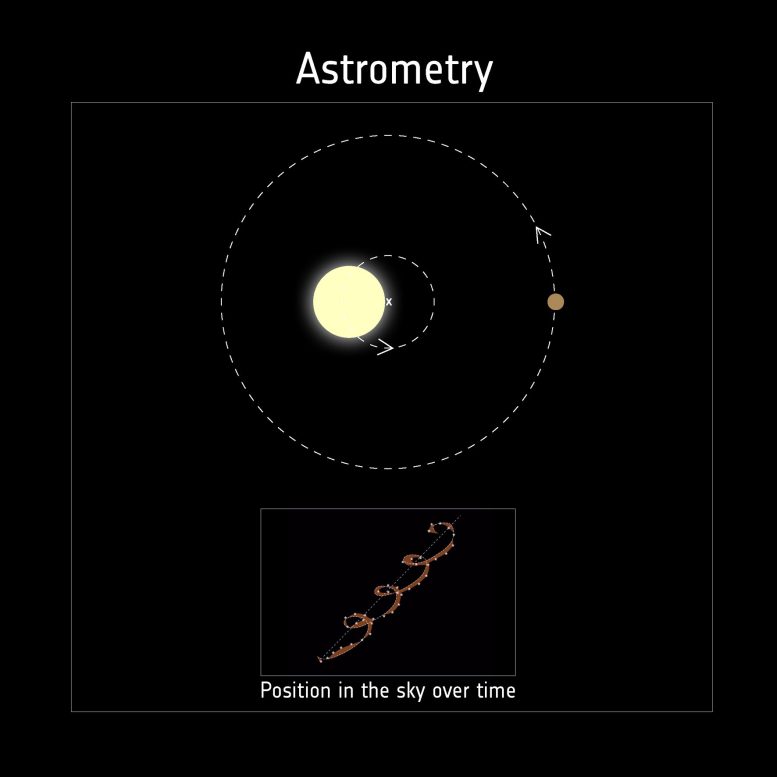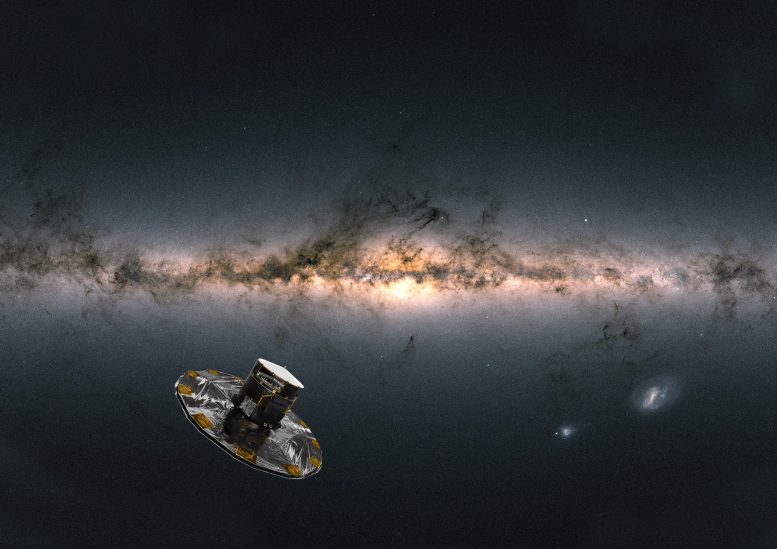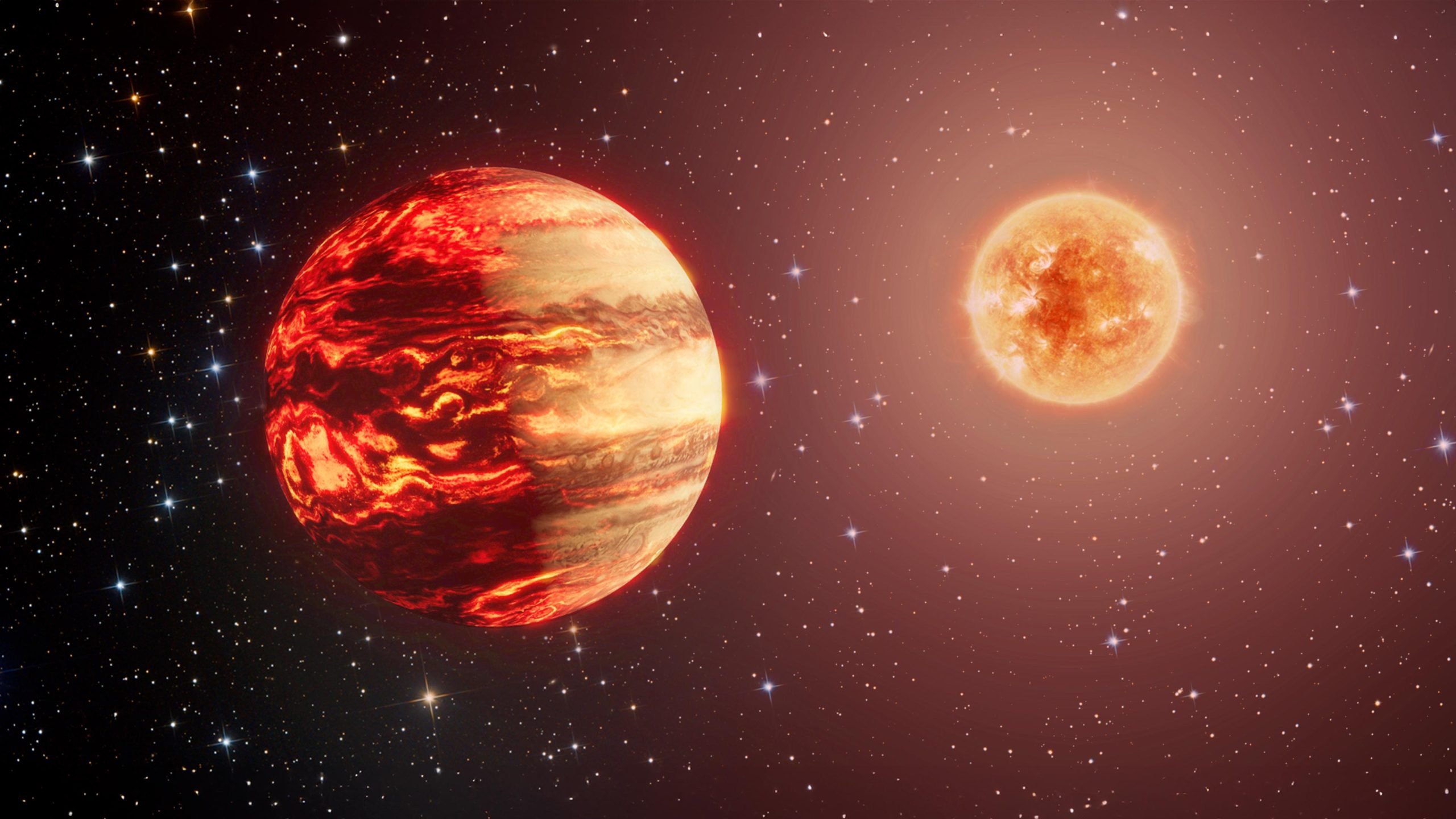Scientists have detected light signals from previously unseen dim companions of eight luminous stars by combining data from ESA’s Gaia mission with ESO’s GRAVITY instrument. Credit: ESA, edited
Astronomers combined Gaia and GRAVITY data to image dim objects near bright stars, potentially revolutionizing the search for nearby exoplanets.
Detecting faint objects close to bright stars is incredibly difficult. Yet, by combining data from ESA’s Gaia space telescope with 
Astrometry is the method that detects the motion of a star by making precise measurements of its position on the sky. This technique can also be used to identify planets around a star by measuring tiny changes in the star’s position as it wobbles around the center of mass of the planetary system. Credit: ESA
Breakthrough Discoveries
Thanks to GRAVITY’s uniquely sharp and sensitive eye, the team caught the light signal of all eight predicted companions, seven of which were previously unknown. Three of the companions are very small and faint stars, while the other five are brown dwarfs. These are celestial objects in between planets and stars: more massive than the heaviest of planets but lighter and fainter than the lightest of stars.
One of the brown dwarfs spotted in this study orbits its host star at the same distance as Earth from the Sun. This is the first time a brown dwarf so close to its host star could be directly captured.

Artist impression of ESA’s Gaia satellite observing the Milky Way. The background image of the sky is compiled from data from more than 1.8 billion stars. It shows the total brightness and colour of stars observed by Gaia released as part of Gaia’s Early Data Release 3 (Gaia EDR3) in December 2020. Credit: Spacecraft: ESA/ATG medialab; Milky Way: ESA/Gaia/DPAC; CC BY-SA 3.0 IGO. Acknowledgment: A. Moitinho
Enhanced Space Research Collaboration
“We have demonstrated that it is possible to capture an image of a faint companion, even when it orbits very close to its bright host,” explains Thomas. “This achievement highlights the remarkable synergy between Gaia and GRAVITY. Only Gaia can identify such tight systems hosting a star and a ‘hidden’ companion, and then GRAVITY can take over to image the smaller and fainter object with unprecedented In an earlier study, astronomers used Gaia data and a different ground-based observatory to capture the image of a giant gas
More than 5000 exoplanets have been discovered to date, but what do they look like? ESA’s dedicated exoplanet missions Cheops, Plato, and Ariel are on a quest to find out. Credit: ESA
Hunting for Exoplanets
Having demonstrated the power of the Gaia-GRAVITY ensemble, the scientists are now looking forward to tracking down potential planet companions of the stars listed in the Gaia catalog.
“The ability to tease out the tiny motions of close-by pairs in the sky is unique to the Gaia mission. The next catalog, to be made available as part of the fourth data release (DR4), will contain an even richer collection of stars with potentially smaller companions,” remarks Johannes Sahlmann, ESA’s Gaia scientist. “This result breaks new ground in the hunt for planets in our galaxy and promises us glimpses of new distant worlds.”
Reference: “Combining Gaia and GRAVITY: Characterising five new directly detected substellar companions” by T.O. Winterhalder, S. Lacour, A. Merand, J. Kammerer, A.-L. Maire, T. Stolker, N. Pourre, C. Babusiaux, A. Glindemann, R. Abuter, A. Amorim, R. Asensio-Torres, W.O. Balmer, M. Benisty, J.-P. Berger, H. Beust, S. Blunt, A. Boccaletti, M. Bonnefoy, H. Bonnet, M.S. Bordoni, G. Bourdarot, W. Brandner, F. Cantalloube, P. Caselli, B. Charnay, G. Chauvin, A. Chavez, E. Choquet, V. Christiaens, Y. Clénet, V. Coudé du Foresto, A. Cridland, R. Davies, R. Dembet, J. Dexter, A. Drescher, G. Duvert, A. Eckart, F. Eisenhauer, N.M. Forster Schreiber, P. Garcia, R. Garcia Lopez, T. Gardner, E. Gendron, R. Genzel, S. Gillessen, J.H. Girard, S. Grant, X. Haubois, G. Heißel, Th. Henning, S. Hinkley, S. Hippler, M. Houlle, Z. Hubert, L. Jocou, M. Keppler, P. Kervella, L. Kreidberg, N.T. Kurtovic, A.-M. Lagrange, V. Lapeyrere, J.-B. Le Bouquin, D. Lutz, F. Mang, G.-D. Marleau, P. Molliere, J.D. Monnier, C. Mordasini, D. Mouillet, E. Nasedkin, M. Nowak, T. Ott, G.P.L. Otten, C. Paladini, T. Paumard, K. Perraut, G. Perrin, O. Pfuhl, L. Pueyo, D.C. Ribeiro, E. Rickman, Z. Rustamkulov, J. Shangguan, T. Shimizu, D. Sing, J. Stadler, O. Straub, C. Straubmeier, E. Sturm, L.J. Tacconi, E.F. van Dishoeck, A. Vigan, F. Vincent, S.D. von Fellenberg, J. Wang, F. Widmann, J. Woillez and S. Yazici, 20 June 2024, Astronomy & Astrophysics.
DOI: 10.1051/0004-6361/202450018











/https://tf-cmsv2-smithsonianmag-media.s3.amazonaws.com/filer_public/34/31/3431771d-41e2-4f97-aed2-c5f1df5295da/gettyimages-1441066266_web.jpg)








Discussion about this post